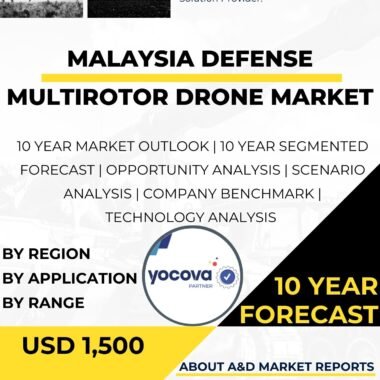Description
The use of multirotor drones has become increasingly prevalent in Canada’s defense sector, revolutionizing reconnaissance, surveillance, and intelligence gathering capabilities. Multirotor drones, also known as quadcopters or multirotor unmanned aerial vehicles (UAVs), are small, versatile aircraft with multiple rotors that provide vertical take-off and landing capabilities. These drones offer unique advantages, including their ability to hover, maneuver in confined spaces, and carry a variety of sensors, making them indispensable tools for the Canadian Armed Forces (CAF) in modern defense operations.
Canada’s defense industry has embraced the potential of multirotor drones, investing in research, development, and procurement to enhance their capabilities and integration into the country’s defense posture. The flexibility of these drones allows for various applications, from battlefield reconnaissance to disaster response and border surveillance. Moreover, their relatively low cost and ease of deployment make them accessible tools for enhancing situational awareness and decision-making.
One of the primary uses of multirotor drones in Canada’s defense operations is intelligence, surveillance, and reconnaissance (ISR). Equipped with high-resolution cameras and sensors, these drones provide real-time aerial footage and data, enabling operators to monitor large areas and specific points of interest. In military operations, this data is crucial for assessing the enemy’s movements, identifying potential threats, and planning tactical responses.
The CAF uses multirotor drones for border security and surveillance missions. The drones can monitor remote and challenging terrains, providing valuable information on illegal activities, smuggling, and human trafficking along Canada’s vast borders. Additionally, multirotor drones are deployed in search and rescue operations, helping locate missing persons or vessels in difficult-to-access areas, such as dense forests or rugged mountain regions.
The integration of thermal imaging and infrared sensors into multirotor drones further enhances their effectiveness in defense operations. These sensors enable drones to detect heat signatures, making them valuable assets in detecting concealed threats, locating survivors in disaster zones, and supporting night-time operations.
Multirotor drones are also employed for environmental monitoring and disaster response. Equipped with specialized sensors, they can assess pollution levels, monitor wildlife, and detect natural disasters such as wildfires or floods. This information aids in coordinating emergency response efforts and managing environmental crises effectively.
The adaptability of multirotor drones allows for easy customization to suit specific mission requirements. For example, some drones are equipped with chemical, biological, radiological, and nuclear (CBRN) sensors, enabling them to detect hazardous substances and assess the impact of potential attacks or accidents. These capabilities are crucial in ensuring the safety and security of military personnel and civilians during emergency situations.
Furthermore, Canada’s defense industry is exploring the use of multirotor drones in swarm tactics. Swarm drones operate collaboratively, leveraging artificial intelligence algorithms to work together as a coordinated unit. This swarm capability offers advantages in reconnaissance, target tracking, and communications relay. Swarm drones can cover larger areas, share data in real-time, and potentially overwhelm enemy defenses, making them an exciting area of research and development for future defense applications.
Safety and security are paramount in the deployment of multirotor drones, especially in sensitive military operations and airspace. The CAF adheres to strict regulations and guidelines for drone operations to prevent unauthorized flights, protect national security, and ensure safe integration into civilian airspace.
While multirotor drones offer numerous benefits, they also present challenges, including battery life and range limitations. Research and development efforts are underway to improve battery technology, allowing for extended flight times and longer operational ranges. Additionally, advancements in miniaturization and lightweight materials contribute to enhancing drone endurance and payload capacity.
Moreover, Canada’s defense industry is investing in the development of advanced autonomous capabilities for multirotor drones. Autonomous drones can perform pre-programmed missions or respond to real-time data, reducing the need for constant human oversight and enabling operators to focus on strategic decision-making.
Cybersecurity is another critical aspect of multirotor drone deployment. As drones become more connected and data-driven, securing their communication systems and data transmission is essential to prevent potential cyber threats or hacking attempts.
In conclusion, multirotor drones have become indispensable tools in Canada’s defense sector, providing valuable intelligence, surveillance, and reconnaissance capabilities. These drones offer flexibility, ease of deployment, and accessibility, making them valuable assets for various military and security operations. As Canada’s defense industry continues to invest in research, development, and integration, multirotor drones are likely to play an increasingly prominent role in enhancing the country’s defense preparedness and contributing to national security efforts.




